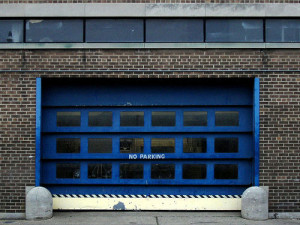 Designing or redesigning a home can be quite a large task. You have to consider the windows, the entry door, the interior and exterior paint, light fixtures, and what feels like hundreds, if not thousands of other things.
Designing or redesigning a home can be quite a large task. You have to consider the windows, the entry door, the interior and exterior paint, light fixtures, and what feels like hundreds, if not thousands of other things.
One thing that seems to often be overlooked is the garage door. Many people still have the impression that all garage doors are the same: off-white and plain.
In reality, that couldn’t be further from the truth. There are hundreds of different options when choosing the right garage door.
Replacing a garage door
When might it be time to replace your garage door? There are a few main reasons we find that customers need to replace their doors:
- Material and age. Wood doors that aren’t regularly maintained (mainly, painted) can quickly rot and need to be replaced. Older homes with wood doors are likely to need a replacement at some point in their lifetimes. And, no matter what kind of door you have, hardware—brackets, rollers, springs—wears out along the way, too.
- Damage. Significant damage such as hail or any other kind of impact (maybe your teenager backed into the door) may compromise the structure of the door, requiring it to be replaced.
- Safety. Though this is primarily a motor issue, older motors (before 1993) may not have safety photo eyes and/or a reversing feature. This can be dangerous. Replacing your motor adds to the safety of the door, and can even add new features like cell phone control!
Things to consider when choosing a new door
Okay: you know you need to replace your door. Where do you start?
Steel or wood? Wooden doors are beautiful, but they are also higher-maintenance. While a wood door needs to be repainted every few years, steel doors can go a lifetime without being repainted.
For most, we suggest steel doors, as they can provide better insulation, are nearly maintenance-free, and last much longer. If you like the look of wood doors, however, there are steel doors veneered with wood that provide the best of both materials—look and function.
To insulate or not to insulate? Insulating your garage door depends on the location and purpose of your garage. For example, sheds or detached garages don’t necessarily need to be insulated, unless you plan on using them for a workshop.
Attached garages should be insulated, especially when a bedroom or commonly utilized space is nearby. Steel doors can be insulated a few ways: a soft back using polystyrene, or filled with polyurethane. Polyurethane provides a higher R-value (i.e., better insulation) than polystyrene.
Color and design. You can choose between a colonial/square design or a ranch/rectangular design for most homes. As for color, most manufacturers offer upwards of five or more factory finishes; beyond that, your door can be customized to many other colors depending on your budget.
You can also consider installing windows, or adding grooves, strap hinges, and more to make your garage door unique. Remember: not all garage doors have to look the same!
DIY or professional installation? Take it from us: installing a garage door is no easy task. Letting our experts at ODW handle the installation will give you peace of mind that your door has been safely (and quickly) installed, and will help prevent any serious injury. On top of that, we offer great warranties and will work hard to match the style and budget you need.
There’s more to garage doors than you might think!
As always, if you have any questions or would like to know more about what Omaha Door & Window has to offer, please don’t hesitate to reach out! Reach out to us via our website’s Contact Us page. We’d love to help out! We’re also available on Facebook and on Twitter @OmahaDoor.
—
photo credit: No Parking via photopin (license)
